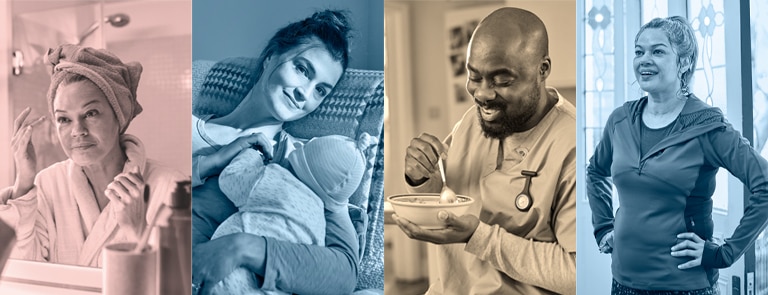15% off €25
Best milk thistle supplements

Milk thistle is a really odd-looking, prickly herb, which is topped with a hairy purple flower!
It is related to the daisy and ragweed family, and native to the Mediterranean part of the world.1
So what is it used for? And how do you know which are the best types of milk thistle supplements?
What are the benefits of milk thistle?
Milk thistle is known to have antioxidant, antiviral, and anti-inflammatory properties.2
It has also been used as a traditional remedy for liver and gallbladder disorders, to promote breast milk production, and to protect the liver from snake bites, other poisons, and alcohol.3
Though milk thistle is often used as a complementary therapy for people with liver diseases or ailments, there is no evidence that it could help prevent you from getting those conditions, particularly if you have an unhealthy diet and consume lots of alcohol.4
Milk thistle could also provide heart benefits, by lowering cholesterol levels, and it could benefit people with type 2 diabetes and cirrhosis.5
It is also possible that milk thistle could help with age-related decline in brain function.
Traditionally, it has been used as a remedy for conditions like Alzheimers and Parkinson’s. Its anti-inflammatory and antioxidant properties mean that it could be neuroprotective.6
Its key active ingredient has been found to prevent oxidative damage of brain cells, and that in turn could also help prevent mental decline.7
What to look out for in a milk thistle supplement
The active ingredients in milk thistle are some plant compounds that together are known as silymarin.8
When considering buying a supplement, check out its ingredient list and consider how much silymarin it contains.
Silymarin can exert membrane-stabilizing and antioxidant activity. It promotes hepatocyte regeneration, and inhibits fibrogenesis in the liver, according to various clinical trials. 9
Hepatocytes are the main functional cells of the liver, and they perform a huge range of metabolic, endocrine, and secretory functions.10
Fibrogenisis is a pathological condition that results from an excessive growth of fibrous connective tissue in an organ like the liver. 11
Milk thistle tea, tablets, extracts or drops: which is best?
Milk thistle extract has a high proportion of silymarin, at around 65 to 80 percent.12 The extract can be consumed in a tablet, or as drops.
Milk thistle tea
Milk thistle tea is usually made up of the fruit and seeds of the plant.
The tea has been used as a traditional medicine for centuries, but the scientific studies of the benefits of the tea have produced mixed results.
Some people also just drink the tea for its cleansing, soothing effect, and general healthy nature.
Most of the tea though, is of course water, which means that most of the nutrients from the herb are diluted.13
Milk thistle tablets
You can also consume milk thistle as a tablet, including as effervescent tablets and as capsules.
The advantage of this format is that you know just how much you are taking, and can consume a regular daily amount.
Some people take milk thistle tablets to help with indigestion.
One capsule twice a day, to help relieve symptoms associated with an upset stomach is the recommended dosage, based on traditional use.14
Milk thistle drops
Milk thistle drops are sometimes combined with other beneficial herbs, such as dandelion or peppermint extract.
You can add a few drops a day to a small amount of water, or another drink, but check the packaging to work out how many drops you will need.
Milk thistle seeds
You can also actually eat the fresh ground seeds of a milk thistle, if you can manage to get hold of them.
You can use a coffee grinder to churn them into a coarse powder. You can then sprinkle them on anything you eat – from shakes, to salads, to your morning cereal.
The seeds taste sweet and bitter at once, and have an oily texture, so they may be an acquired tasted.15
In terms of how much you will need, a safe dosage of milk thistle is around 420 milligrams per day, for up to 3.5 years.
Milk thistle extract
Alternatively, an extract (in tablet or drop form), that contains 200 to 400 milligrams of silymarin is typically considered an effective amount.16
A note that when it comes to milk thistle tea, you cannot really drink too much of it.
However, people who have an allergy to plants in the same family, such as ragweed, daises, marigolds and chrysanthemums, may also have an allergic reaction to milk thistle.17
Usually, however, no allergic reaction would be noted until the dosage was excessive, at around 1.5 grams in a single day.18
Last updated: 31 March 2021
- https://www.webmd.com/digestive-disorders/milk-thistle-benefits-and-side-effects
- https://www.ncbi.nlm.nih.gov/pubmed/26755857
- https://www.healthline.com/nutrition/milk-thistle-benefits
- https://www.healthline.com/nutrition/milk-thistle-benefits
- https://www.webmd.com/digestive-disorders/milk-thistle-benefits-and-side-effects
- https://www.healthline.com/nutrition/milk-thistle-benefits
- https://www.ncbi.nlm.nih.gov/pubmed/19647779/
- https://www.healthline.com/nutrition/milk-thistle-benefits
- https://pubmed.ncbi.nlm.nih.gov/21466434/
- http://www.vivo.colostate.edu/hbooks/pathphys/digestion/liver/histo_hcytes.html
- https://www.ncbi.nlm.nih.gov/pmc/articles/PMC4539753/
- https://www.healthline.com/nutrition/milk-thistle-benefits
- https://www.webmd.com/diet/milk-thistle-tea-good-for-you
- https://www.hollandandbarrett.com/shop/product/holland-barrett-milk-thistle-capsules-60099080/
- https://www.cambridgenaturals.com/blog/milk-thistle-food-for-the-liver
- https://www.drugs.com/npp/milk-thistle.html
- https://www.webmd.com/diet/milk-thistle-tea-good-for-you
- https://www.drugs.com/npp/milk-thistle.html



